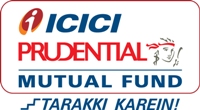How to Achieve Financial Goals through Right Asset Allocation

Financial planning is one of the best ways to start investing into the financial assets but unfortunately most of us have been adhoc investors all our lives. As Indians have always been one of the highest savers in the world historically, financial planning doesn’t come to us naturally. Therefore, we tend to invest in whatever asset that come our way and that has been the story of most of us if not all!
We have all heard the common saying of ‘Don’t put all your eggs in one basket’ but how many of us follow the same when it comes to our own investments? When you think about it, it is actually a very wise saying which demonstrates its relevance in our financial planning process. We all dream of being millionaires or having vast sums of money and want our investments to yield us some magical returns which would help us fulfilling this dream of ours. But how many of us achieve this dream? Does your financial portfolio yield a good return in accordance with your requirements? If not, where are you going wrong?
Asset allocation is the magical mantra if you want to generate optimum yields from your investments. Allocating your surplus cash to the various investments instruments based on your requirements is what determines asset allocation. It is a simple word holding a simple meaning and not rocket science. Let us understand this in details.
What is asset allocation?
It is a tactical approach to handle your finances where you invest your money across various financial instruments based on your life goals and risk taking ability.
What does asset allocation depend on?
Allocating your funds across various investment classes depend on three major factors:
- What is your risk-appetite?
- For how long would you stay invested?
- What are your life goals?
What are the benefits of right asset allocation?
If you allocate your finances correctly across various investment classes you would be able to:
- Generate the most optimum yields
- Match your financial goals to your investments
Does your portfolio show asset allocation?
Are you the one blessed with a diverse portfolio or are you too a victim of a prejudiced investment strategy? Let us understand this through an example -
Mr. Sharma boasted that he has a good appetite for risk and his Equity Mutual Fund holding has given him exceptional returns. However, when actually cross verified with his entire asset allocation of his net worth, he seemed to have only 5% of his entire portfolio in equities! So even if he gets amazing returns from Equity Mutual Funds, how much difference does it really create on his overall portfolio?
On the other hand, one of my clients had about 90% of his investments in various Equity Mutual Funds. Despite my best efforts to diversify the same he did not do so and when the market corrected the valuations eroded so steeply that it was almost difficult to fathom!
So a lopsided asset allocation is the first step towards financial disaster! Even 80-90% exposure in real estate can be a high risk to the portfolio in liquidity terms. Thus, the intelligent way to take your first informed step towards healthy financial future is by assessing your risk appetite and gauging your current asset allocation and then trying systematically to achieve the ideal asset allocation through informed investment decisions.
Steps of Financial Planning
Financial Planning has 6 basic steps:
- Identify and prioritize your investment objectives as realistically as possible along with timelines
- Gather information about your present investments, risk appetite, investment objective, etc.
- Analyze that information according to your risk profiling and ideal asset allocation
- Check recommendations based on the ideal asset allocation versus your present asset allocation and maybe some tactical allocation based on current market scenario
- Take action on your portfolio consolidation and go towards ideal asset allocation as best as possible
- Review by tracking ongoing progress
Thus, asset allocation comes into the primary stages of financial planning right after analyzing your risk appetite.
a. How to understand the ideal Asset Allocation?
Before finding out your ideal Asset Allocation, you need to find out your Risk Profile. It is usually a simple set of questionnaire which determines your risk taking appetite as far as your investments are concerned.
The risk profiling is scored and the total of the score is classified into different bands which determine your intrinsic risk appetite. Each question has a number and the total numbers adds upto your total score.
Let us take an example of a standard risk profiling questionnaire:
A. Your age:
- Above 50 years
- Between 40 to 50 years
- Between 30 to 40 years
- Less than 30 years
B. How long will you stay invested, i.e. investment tenure?
- Between 1-3 years
- Between 3-5 years
- Between 5-10 years
- More than 10 years
C. No of Dependents:
- More than 3
- Between 2 to 3
- Only 1 other than yourself
- Only Yourself
D. Past Investment Experience
- No Exposure
- Little Exposure
- Moderate Exposure
- High Exposure
E. What is your primary goal?
- Preserve the Investment
- Generate Income
- Grow the value moderately
- Grow Money Substantially
F. Which Portfolio would you prefer?
- Maximum 5% and Minimum 3% return
- Maximum 10% and Minimum 0% return
- Maximum 15% and Minimum -2% return
- Maximum 20% and Minimum -5% return
And the scoring is like:
- Your score below 14 means you are a Conservative Investor and your Ideal Asset Allocation should be 50% in Debt Market, 20% in Equity oriented investments and the remaining 30% in Alternate Investments like Real Estate, Gold, etc.
- Your score between 14 to 18 means you are a Balanced Investor and your Ideal Asset Allocation should be 35% in Debt Market, 40% in Equity oriented investments and the remaining 25% in Alternate Investments like Real Estate, Gold, etc.
- And if your score is above 18, it means you are an Aggressive Investor and your Ideal Asset Allocation should be 20% in Debt Market, 60% in Equity oriented investments and the remaining 20% in Alternate Investments like Real Estate, Gold, etc.
So, if your answers are:
- You are 35 years old, i.e. 3
- Your investment Horizon is 5-10 years, i.e. 3
- Number of dependents you have are 2, i.e. 2
- Past Investment Experience is Little Exposure, i.e. 2
- Primary Goal of Investment is to Grow the Money Moderately, i.e. 3
- And preferred Portfolio is Maximum 10% and Minimum 0%, i.e. 2
Hence the total score is 3+ 3+ 2+2+3+2= 15. It means you are a Balanced Investor and your Ideal Asset Allocation should be 35% in Debt Market, 40% in Equity oriented investments and the remaining 25% in Alternate Investments like Real Estate, Gold, etc.
How should you go about asset allocation?
First determine your risk appetite, financial goals and time horizon. If you have an aggressive risk profile, you may invest about 60% to 70% of your entire portfolio into equity oriented investments like Mutual Funds provided you have time by your side and spread the rest in debt instruments and cash holdings for liquidity and contingency purposes. Here, you may like to read Mutual Funds that you must have in your portfolio
A moderate risk taker with a balanced risk appetite should invest about 35% - 40% of his money in equity oriented investments like Mutual Funds and the rest in debt and real estate with about 5-10% in cash. On the other side, a conservative investor can have a minimal 15% - 20% equity exposure, 50% - 60% in debt and liquid funds with around 20-30% in alternate investments. Choosing the apt portfolio is the first and the most important step towards an informed financial planning which would best suit your requirements along with your financial goals and risk appetite.
Difference between Ideal Asset Allocation and present Asset Allocation
When you see your Ideal Asset Allocation, most of you consider the Asset Allocation ONLY in your present visible investment structure and rarely consider your entire networth. That is where the role of a Financial Advisor is very crucial. Ideal Asset Allocation considers your entire Debt, Equity and alternate investment Portfolio which may include:
Debt:
- Debt Mutual Funds, Liquid funds etc.
- Fixed Deposits, Recurring Deposits, etc.
- Provident Funds and Super-annuation including Employers Provident Fund, Public Provident Fund, Voluntary Provident Fund, Gratuity, Annuity payable if any
- Bonds, National Savings Certificates, KVP, etc.
- Current Paid Up Value of Life Insurance Policies
Equity:
- Equities or Equity Oriented Mutual Funds
- Own Company ESOPs
- Listed and Unlisted Stocks within India and outside
- Unit Linked Insurance Plans
Alternate:
- Property, excluding current residence, within India and outside
- Gold, Gold coins, Ornaments, etc.
- Watches, Art, other Collectables, etc.
- Cash in Savings/ Current Account or investment in liquid Funds for emergency purposes
When all the above mentioned aspects are considered and proportionately calculated, the Present Asset Allocation is determined in terms of total Networth. The difference between the two is what needs to be bridged for the long term healthy maintenance of the portfolio in order to achieve your financial goals.
Conclusion
A lopsided portfolio leaning heavily towards debt oriented investments stunts the yield potential while a lean into equity oriented investments result in high volatility. Leaning into alternate investments of real estate or gold limits liquidity and blocks the money for a longer tenure. Having a balanced portfolio based on your needs is the best course of action as it would ensure ideal returns and aid in wealth maximization while not being very volatile. As kids, we heard the saying of putting all the eggs in one basket and now it is time we exercise it in our financial planning process. Plan your portfolio through right asset allocation and enjoy financial success. It is always advisable to avail the services of a financial planner throughout the journey of your wealth creation.
RECOMMENDED READS
LATEST ARTICLES
- Why you need to have hybrid mutual funds in your portfolio: Different types of funds Part 2
- Why you need to have hybrid mutual funds in your portfolio: Misconceptions Part 1
- Which is the best time to invest in mutual funds
- Economic slowdown: Is it real and what should you do
- Importance of liquidity in investing: Mutual funds are ideal solutions
An Investor Education Initiative by ICICI Prudential Mutual Fund to help you make informed investment decisions.
Quick Links
Follow ICICI Pru MF
More About ICICI Pru MF
POST A QUERY




